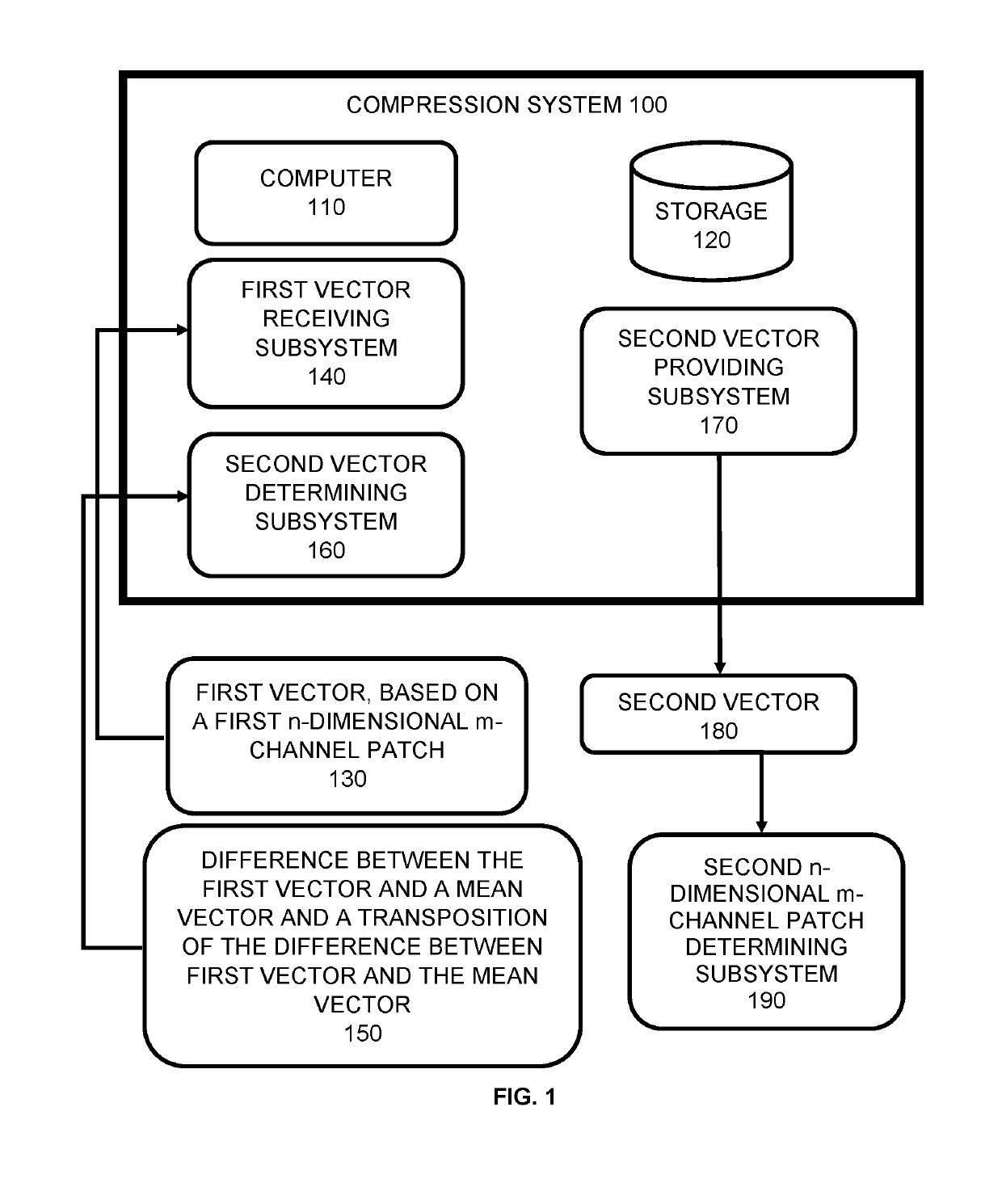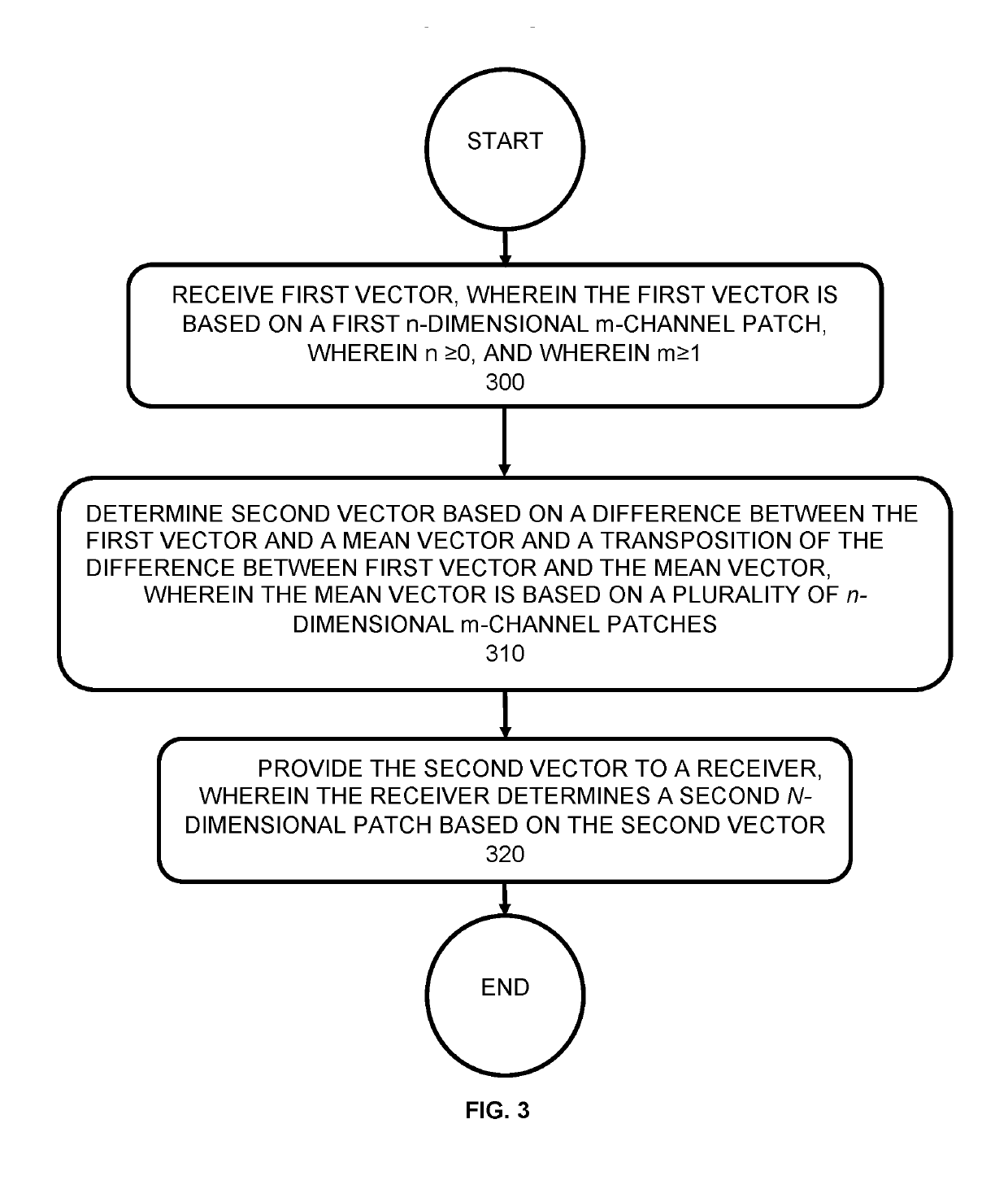Method and system for facilitating compression
a compression method and data technology, applied in the field of data compression, can solve the problems of increasing overall costs, wasting energy, giving up in frustration, etc., and achieve the effects of facilitating decompression of the entire n-dimensional space, improving qoe for the receiver, and speeding up downloads
- Summary
- Abstract
- Description
- Claims
- Application Information
AI Technical Summary
Benefits of technology
Problems solved by technology
Method used
Image
Examples
Embodiment Construction
[0031]FIG. 1 shows an example compression system 100 in accordance with an embodiment of the subject matter. Compression system 100 is an example of a system implemented as a computer program on one or more computers in one or more locations (shown collectively as computer 110), with one or more storage devices in one or more locations (shown collectively as storage 120), in which the systems, components, and techniques described below can be implemented.
[0032]Compression system 100 receives first vector 130, which is based on a first n-dimensional m-channel patch. The first vector can be a flattened version of the elements of the first n-dimensional m-channel patch. Here “flattening” means that all the elements of the patch are flattened into a vector. For example, in an image, the first vector can comprise a 27-element vector, which comprises the RGB values of a flattened 3×3 patch. Similar flattening can be applied to any first n-dimensional m-channel patch. The result is a vecto...
PUM
 Login to View More
Login to View More Abstract
Description
Claims
Application Information
 Login to View More
Login to View More - R&D
- Intellectual Property
- Life Sciences
- Materials
- Tech Scout
- Unparalleled Data Quality
- Higher Quality Content
- 60% Fewer Hallucinations
Browse by: Latest US Patents, China's latest patents, Technical Efficacy Thesaurus, Application Domain, Technology Topic, Popular Technical Reports.
© 2025 PatSnap. All rights reserved.Legal|Privacy policy|Modern Slavery Act Transparency Statement|Sitemap|About US| Contact US: help@patsnap.com



